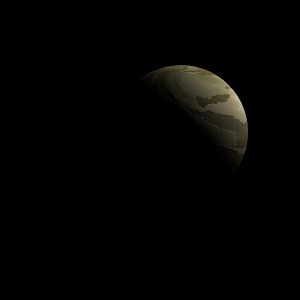|
|
Space Astro
|
Info for exoplanet "Haliumbauti"
| Scientific (actual) data |
|---|
| Name | Kepler-1598 b |
| Planet status | Confirmed |
| Radius | 0.085 |
| Orbital period | 4.34195 |
| Discovered | 2016 |
| Updated | 2021-02-05 |
| Tconj | 2454970 |
| Publication | Announced on a website |
| Detection type | Primary Transit |
| Alternate names | 2MASS J19135258+4647012 b, K04383.01, KIC 9883606 b, KOI-4383 b, KOI-4383.01, WISE J191352.59+464701.0 b |
| Star name | Kepler-1598 |
| Right ascension | 288.47° |
| Declination | 46.78° |
| Mag j | 12.734 |
| Mag h | 12.444 |
| Mag k | 12.42 |
| Star distance | 734 |
| Star metallicity | 0.04 |
| Star mass | 1.07 |
| Star radius | 1.09 |
| Star age | 3.8 |
| Star temperature | 5940 |
| Star alternate names | 2MASS J19135258+4647012, KIC 9883606, KOI-4383, WISE J191352.59+464701.0 |
| Wikipedia article | Kepler-1598 b |
Back
| |
| Fictional info (?) |
|---|
| Suggested name | Haliumbauti |
| Planet type | Cold planet |
|
One of this planet's moons is said to have friendly but shy primitive plants known to feed on the ground while finding nourishment in a substance called "Cisco" at night. The Mnelis are somewhat related to Rokrok Ait but have 2 tentacles and vary in length from 1 to 2 cm. Mnelis can withstand temperatures from -50 to -30°C but are killed by severe infection. |
| Estimated population | 170000 |
| Atmosphere | Oxygen | 79% |
| Methane | 20% |
| Carbon dioxide | 0.3% |
| Water | 0.0028% |
| Atmospheric pressure | 1.2 bar |
 |
| Moon | Aedi | Small irregular gaseous asteroid |
| Google search for Haliumbauti |
|
Website by Joachim Michaelis
|
|
|
|